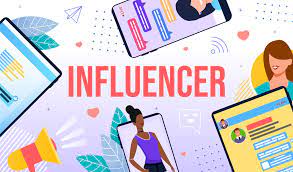“A magician never reveals his/her secrets, but I’ll share one with you. The secret to creating and leading change is speaking to the heart. In order for change to be effective, both thoughts and feelings need to be shifted. Change is 60% heart and 40% mind “(Kotter, 2011).

My GOAL: To have a successful Computer Science in HighSchool. |

My GOAL will be measured based on personalized projects andalgorithms, student collaboration, self-reflection, peer review,lesson surveys, and reflection. Before the year-end, there will be aclass survey for students and the number of enrolees for nextschool year (2022-2023) |

My Vital Behaviors are: Instructor will incorporate studentengagement activities such as blended learning, flipped classroomand project-based learning. Instructor will also showcasecollaboration, growth mindset and COVA(Choice, Ownership, Voiceand Authentic) methodology to create a significant learningenvironment and to provide students with real skills in computerscience. |

My Organizational Influencers:Principal, Assistant Principal,s and CTE Coordinators. |
MY STRATEGIES FOR DEVELOPING VITAL BEHAVIORS:NOTICE TO OBVIOUS – The CTE department must allot a budget for the curriculum for computer science classes. Any successful classes mean having exciting and motivating students. As mentioned in my innovation plan, I will incorporate blended learning, flipped classrooms, and project-based learning in my classes to make them more engaging and personalized. LOOK FOR CRUCIAL MOMENTS – Administrators will always look for premade quizzes and exams, which are generally attached to rubric scores. Premade’s curriculum needed to be modified into personalized projects so that students could experience creating their projects while showcasing their own ideas and voice and being authentic. Another crucial moment is when the student starts to think that coding is hard; this is when embracing mistakes will come by imparting a growth mindset and promoting students’ collaboration. LEARN FOR POSITIVE DEVIANTS – Since this is the only year that computer science classes were offered in my district. This is my opportunity to highlight my innovative approach and curriculum design to have engaging and successful computer science classes. As the program continues to evolve, it will be a role model class, hoping that students will take more computer classes and spread the likeness of computer science classes, eventually leading to more enrollees. SPOT CULTURE BUSTERS – Innovation and change are always hard, and it is easy to go back to the traditional method; students open the book, read, follow the direction and repeat the cycle. Some school administrators need more time to be ready for change; it is scary to see games as part of learning(for example, the Scratch coding program). My student engagement is in place, students take charge of their learning, and students help each other with their collaboration. But I will continue because my vital behaviors are built on building and creating significant learning by promoting the COVA methodology and helping students learn real skills in computer science. |
PART B: SIX SOURCES OF INFLUENCES
Dr. Harapnuiks’ Module 3 Video, quotes Joseph Grenny “One of the biggest mistakes people make is to not address all six sources of influence in their change strategy”. Those six sources of change are divided into two main domains of motivation and ability and further divided into personal, social, and structural sources. The below information provides the outlines of my thoughts on how to have successful computer science classes, with the hope that through student engagement activities and providing students with significant learning, more students will enroll by the next school year.
References:
Kotter, J. [Dr. John Kotter]. (2011, March 23). The heart of change [Video file]
Dwayne Harapnuik. (2016). Six Sources of Influence – EDLD 5304 Module 3. https://youtu.be/3PrIyMHdxFI.
Grenny, J., & Patterson, K. (2013). Influencer: the power to change anything. McGraw-Hill Professional.